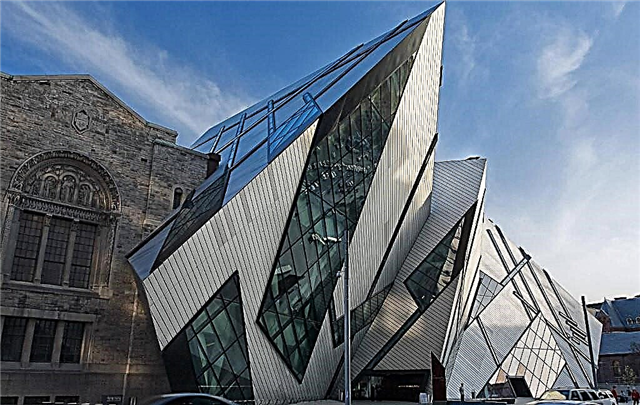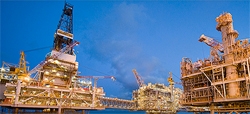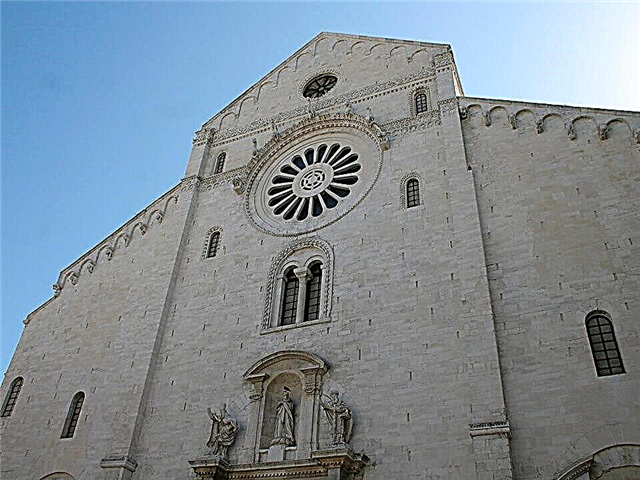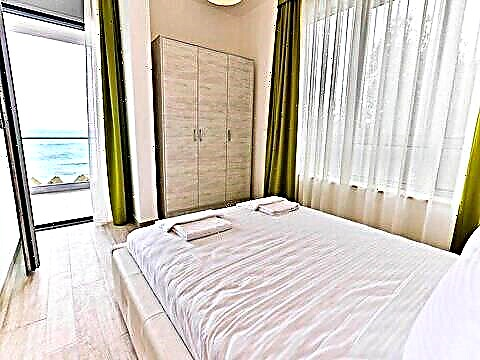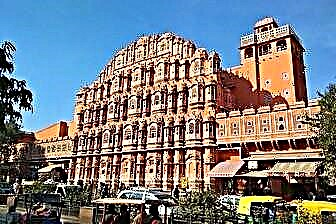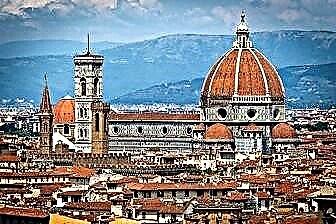Florence is the embodiment of the spirit of the Renaissance, a city-architectural masterpiece and the birthplace of great creators who forever imprinted their names in the memory of mankind. Michelangelo, Leonardo da Vinci, Niccolo Donatello, Dante Alighieri, Benvenuto Cellini - all these brilliant masters lived and created their immortal masterpieces in Florence.
The city is surrounded by the magnificent landscapes of Tuscany, the best works of art are exhibited in Florentine museums, and opera singers perform in medieval squares. Florence inspires and enchants - no tourist remains indifferent to its beauty. Florence is called the "city of flowers", which has blossomed its beautiful petals among the picturesque plains and hills of Italy.

The best hotels and hotels at affordable prices.
from 500 rubles / day
What to see and where to go in Florence?
The most interesting and beautiful places for walking. Photos and a short description.
Santa Maria del Fiore
A luxurious and graceful cathedral, a real architectural wonder that has adorned Florence for several centuries. The construction of the temple lasted several centuries under the guidance of such renowned architects as Giotto di Bondone, Francesco Talenti, Giovanni di Lappo Gini and others. The vaults of the cathedral are decorated with frescoes of the 15th century, the incredible beauty of the facade is decorated with marble bas-reliefs, the red dome of the cathedral seems to hover over the city.

Baptistery of San Giovanni
Octagonal marble building of the XI-XII century, intended for baptism. Representatives of the powerful Medici family and the great Dante accepted the Christian faith here. The building is decorated with bas-reliefs, which were worked on by Byzantine craftsmen. Most of the tourists' attention is drawn to the eastern gate of the baptistery, where scenes from the Bible are depicted on gilded panels.

Giotto's bell tower
The bell tower is part of the architectural complex of the Cathedral of Santa Maria del Fiore. It is an outstanding example of Italian architectural art, created with the participation of the master Giotto di Bondone. His name is immortalized in the title of the campanile. The tower reaches 84 meters in height, on the upper tier there is an observation deck, from where a panoramic view of Florence opens up to a tourist. More than 400 steps lead to the site.

Basilica of Santa Croce
Basilica of the 13th century, a classic monument of the Italian Gothic. It is assumed that the architect Arnolfo di Cambio began work on the construction of the temple. According to legend, on the site of the basilica there was a chapel built by St. Francis of Assisi. The interior is decorated with works of art from the 14th-15th centuries. There are works by Giotto, Benedetto de Maiano, Donatello, Giovanni da Milano, Bernardo Rossellino. The basilica belongs to the Franciscan Order.
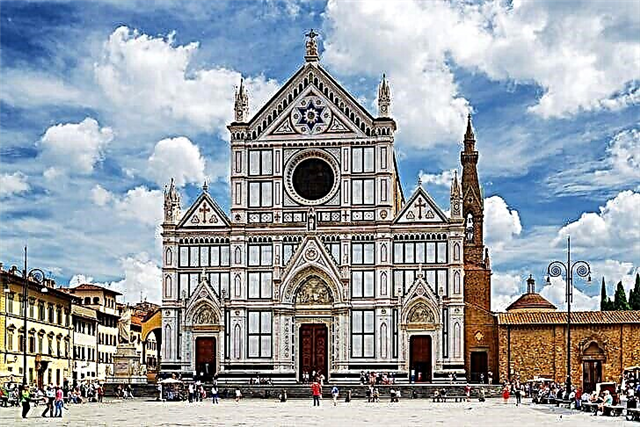
Basilica of San Lorenzo
An architectural monument of the 15th century, built in the style of the early Renaissance. The temple houses the tombs of representatives of the Medici family. During the heyday of this influential Florentine family, the Basilica of San Lorenzo was the Parish Church of the Medici. Near the main altar is the tomb of the founder of the dynasty, Cosimo the Elder. At the basilica there is a monastery and a Laurentian library.

Basilica of Santa Maria Novella
The main Dominican church of Florence, an architectural monument of the XIII-XIV centuries. Previously, there was a Romanesque chapel on this site, which was given to the monks of the Dominican Order. The basilica is decorated with an openwork facade, a bit reminiscent of the painting of a decorative box. The interior is decorated with Greek frescoes and marble bas-reliefs. The action of "The Decameron" by D. Boccaccio begins in the basilica.

Monastery and Church of San Marco
The monastery, which in the XIV century passed to the Dominican Order from the Congregation of the Sylvestrines of St. Benedict at the behest of the ruler of Tuscany (the Benedictines did not manage well enough). It is believed that the monastery originated in the XII century. In the second half of the 19th century, the National Museum of San Marco was established in the monastery. The collections of this museum include priceless exhibits of the Renaissance artists.

Academy of Fine Arts
The very first European Academy of Painting, founded in 1561 with the participation and full support of Duke Cosimo I of Medici. Agnolo Bronzino, Giorgio Vasari and Bartolomeo Ammanati stood at the origins of the academy. The institution has an art gallery, where outstanding works of art are exhibited. Among them is the famous "David" by Michelangelo. This five-meter statue is one of the symbols of the Renaissance.

Bargello Museum
Museum, which is located in a historical building of the XIII century. The building is a real medieval castle. In past centuries, a prison, a barracks, a judge's residence, and a city magistrate were located here. The collection of the Bargello Museum is considered one of the most significant in all of Italy. The works of B. Cellini, Michelangelo, Giambologna and other famous masters are kept here.
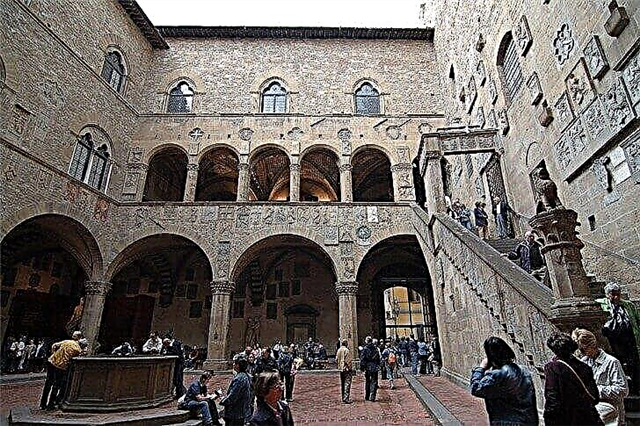
House-Museum of Dante Alighieri
Donte Alighieri is a famous poet, politician, creator of the immortal "Divine Comedy" and one of the founders of the Italian language. The old stone house of the genius in one of the oldest Florentine quarters has been turned into a museum named after him. The exposition tells about Dante's life and his creative path. The museum has many paintings depicting 14th century Florence.

Palazzo Vecchio
The palace of the late XIII - early XIV centuries, which houses the city municipality. The rulers of the Florentine Republic and the Duchy of Tuscany have sat here for centuries. The building is crowned with a 94 meters high tower named after the master Arnolfo di Cambio. The palazzo has survived to this day in its original form. The rich interior decoration is the merit of the court architect of the Medici family, master D. Vasari.

Palazzo Pitti
The palace, built for the Pitti family in the 15th century in the gloomy architectural style of the Quatrocheto (one of the directions of the Early Renaissance). Currently, it houses one of the best museums in Florence. Rather, on the territory of Palazzo Pitti there are several different exhibitions: Galarea Palatina, Museum of Silver, Gallery of Costumes, Museum of Porcelain, Museum of Modernist Art.

Palazzo Medici Riccardi
For many centuries, the palace was the main residence of the Medici - the ruling family of Florence. The dynasty came from the banker Cosimo the Elder, who achieved such a high position thanks to his money and influence. In the middle of the 15th century, a magnificent palazzo was built for the newly-made ruler. In the 17th century, the building was sold to the Riccardi family, who worked to expand and renovate it in the Renaissance style.

Michelangelo Square
Florentine square, from where the best panorama of the city opens. Because of this, it is always crowded and noisy. The square was created in the 19th century during a large-scale reconstruction of Florence. The name was given in honor of the consummate creator Michelangelo. In 1873, a copy of the sculpture "David" by Michelangelo and four more copies of the works of this famous sculptor of the Renaissance were installed on the square.

Signoria Square
Historic center and one of the most beautiful squares in all of Italy. The square is a harmonious architectural ensemble, which includes the Palazzo Vecchio, the Fountain of Neptune, Loggia Lanzi and several sculptural groups. Even in ancient times, there was a crossroads of important roads, there was a Roman amphitheater and antique villas. But these buildings have not survived to this day.

Uffizi Gallery
One of the most famous art museums in the world.It is difficult to overestimate the cultural value of the Gallery for all Humanity - masterpieces by Botticelli, Giotto, Michelangelo, Leonardo da Vinci, Raphael, Caravaggio are kept here. Under Cosimo I of the Medici dynasty, the Uffizi housed administrative buildings, but over time, an impressive collection of works of art has accumulated inside. In the 18th century, it was decided to open a public museum on the territory.

Vasari Corridor
A covered arched passage across the Arno River that connects Palazzo Pitti and Palazzo Vecchio. It was built at the behest of Francesco I Medici. Through this corridor, the ruler could quickly cross the river without having to go outside. The passageway is decorated with paintings by Titian, da Vinci, Giotto and several hundred other works by masters of the 16th-17th centuries. Today, walking around Vasari is only possible for a fee.

Ponte Vecchio bridge
Crossing the Arno River, which was built in the days of Ancient Rome. Over the past centuries, the bridge has been repeatedly destroyed, washed away and rebuilt. In the 15th century, a Florentine meat market worked here, which caused a foul smell to spread throughout the surrounding area. Now on Ponte Vecchio, expensive jewelry boutiques for tourists have taken the place of butcher shops. The bridge itself is part of the Vasari Corridor.

Kashine Park
In the 16th century, the hunting grounds of the Medici family were located on the site of the park. At the beginning of the 19th century, the territory was opened to the public, and later the park was sold to the city authorities. Since then, Cascine has become a popular holiday destination for the Florentines. It is equipped with bicycle and walking paths, signposts, picnic areas and other infrastructure. Admission is free for everyone.

Boboli Gardens
Landscape park complex, lavishly decorated with fountains, gazebos and flower beds. The gardens were founded in the 15th century at the request of the wife of Cosimo I Medici, Duchess Eleanor of Toledo. Over the centuries, the Boboli Gardens changed owners several times. Each noble family that acquired these territories strove to contribute to the landscape of the park complex.


